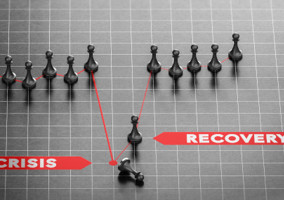Many of us are finishing the year end and the audit is getting signed off. Our reserves are neatly split into different funds with different purposes.
The restricted funds are monies people gave us for a specific purpose, the designated funds are monies we have already saved and our trustees have decided to dedicate for a specific purpose, endowment funds are monies we can’t spend but we live off the income they earn and fixed asset funds are there to make sure we don’t look too rich.
But what about free reserves and unrestricted funds?
Liquidity
We live by rules of thumb: traditionally we aim for three to six months of unrestricted expenditure in free reserves. If your reserves and cash are too high people are less willing to donate. If you have too little then you get choke points as liquidity dries up. We have monthly liquidity cycles (salaries at the end of the month), annual liquidity cycles (seasonal fundraising, year-end panic-buying) and long-term liquidity cycles (large gifts come irregularly).
I think we all agree that we need reserves for liquidity. This is a basic. In order to do our jobs, meet our mission and deliver for our beneficiaries, we need enough money in the bank at the beginning of the month to get us through to the end of the month, and we need enough money in the bank at the beginning of the year to get us through to the end of the year. Otherwise many of us are in the nightmare of sleepless nights trying to decide who gets paid and who does not and fending off creditors.
So, we agree we need reserves to cover liquidity. How much though?
A simple approach is to look at the last three financial years’ bank balances. Subtract the highest balance from the lowest balance for each year. Then pick the year with the biggest difference. So if your bank account ranged from £450,000 to £100,000 then your liquidity requirement would be £350,000. And if you had budgeted for a £70,000 deficit then you would probably need that added to your liquidity requirement at some point in the year. So, let’s say £420,000.
Risks
Liquidity is the easy bit. But three to six months’ reserves are unlikely to be needed for just liquidity. We need reserves because we need to cope when bad things happen, say the roof leaks or a global pandemic kills millions and shuts down the economy. When bad things happen you will be glad of your reserves, particularly the free and liquid ones.
Ultimately, we need reserves to cover risks too. And the X months’ requirement is simply a proxy for those risks.
So, we have established that we need reserves for liquidity and risks, and I have suggested a way to calculate liquidity - it is not perfect but it is good enough for me. We should now think about how we calculate risk.
This is an exercise we in the Stroke Association have just introduced. For this to work you need a functioning risk register. In order to function, the risk register should be produced independently, be reviewed by management and trustees regularly eg quarterly, and should encompass all major risks the charity faces. The risks should be scored in line with the Charity Commission guidance.
To work out the reserves needed to manage your risks you then need to work out or estimate or guess how much it would cost if the risk occurred.
Sometimes you can consider the direct cost e.g. a fire in the warehouse destroys all your stock. If this is not insured the cost is the value of the stock.
Sometimes the cost of the risk is the indirect cost. Say one of your employees mistreats a volunteer. The volunteer sues and you have legal costs of £10,000 to pay. These are direct costs. However the Daily Mail picks this up and names and shames you. You lose lots of supporters this year and for a long time afterwards.
This is a substantial cost and well above what you could reasonably reserve for. What you should reserve for is the indirect cost of change to reduce the size of the charity to reflect your new, smaller size. You calculate the cost of change at £350,000.
But not every risk will happen every year, so we need to weight each risk. If we think this risk will materialise every five years, we give it a 20% likelihood rating. In this case we think it will happen every 20 years we give it a 5% rating.
We then calculate the price of the risk by multiplying the cost by the likelihood. In this case the cost (£10,000 + £350,000) x 5% equals a price of £18,000. Then we can add up the prices of every risk to get the total risk reserve requirement.
Now we have a formula for calculating how much reserves we need for risks and how much we need for liquidity.
At the Stroke Association we have calculated that our reserves requirements are £9m, based on £2m for liquidity and £7m for risks. We review this quarterly and the latest position is published in our annual report.
Our policy states that if reserves are deficient, we have three years to restore them, if they are in excess we should designate or take three years to run them down. We always do a three-year plan with our budget and aim for our reserves to be at the right level over three years. By doing this we always steer in the right direction and avoid sudden shocks.
By using a risk-based approach to reserves we can quantify where our reserves should be, we cut down on the haggling over reserves, and it makes clear to management and trustees the risks we would not be protected for should reserves became deficient.
Chris Fyfe is executive director, finance at the Stroke Association
Related articles










